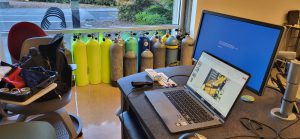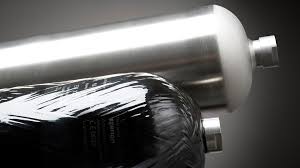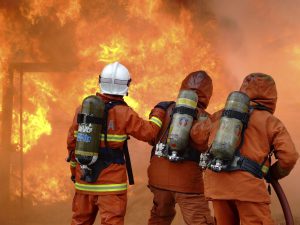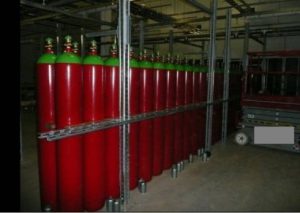
Cylinder Inspection Training: Why a Maintained Cylinder Is a Happy Cylinder
Uncover the importance of gas cylinder inspections and training. Dive deep into ensuring safety, boosting efficiency, and prolonging cylinder life.

Handling cryogenic cylinders involves working with extremely low-temperature gases that pose unique safety risks. To ensure the safe handling, storage, and transportation of these hazardous materials, regulatory bodies have implemented standards and guidelines. One such regulation is 29 CFR 1910.101, a crucial framework that outlines specific requirements for managing cryogenic cylinders in various industries.
In this article, we will delve into the world of 29 CFR 1910.101 and explore its implications for your cryogenic cylinder operations. Whether you work in a medical facility, manufacturing plant, or research laboratory, understanding and complying with this regulation is paramount to maintaining a safe work environment.
We will unravel the key provisions of 29 CFR 1910.101 and discuss how they impact the handling of cryogenic cylinders. By gaining insights into this regulation, you will be better equipped to ensure the safety of your personnel, prevent accidents, and comply with legal obligations. Let us dive in and explore the significance of 29 CFR 1910.101 for your cryogenic cylinder practices.
1910.101 is the Occupational Safety and Health Organization (OSHA) standards dealing with compressed gases. Both the storage, handling, and transportation of a compressed gas cylinder. 1910.101 refers the employers to the hazardous materials regulations of the Department of transportation. Specifically, 49CFR parts 171-179. 1910.101. It also refers employers to the compressed gas Assocation (CGA) pamphlet C6 and C8.
1910.101 simply tells the employer that they must have an inspection process in place for compressed gas cylinders. It states, “Each employer shall determine that compressed gas cylinders under his control are in a safe condition to the extent that this can be determined by visual inspection.” The employer programs must comply with 49CFR and the CGA recommendations and regulations. However, 1910.101 does not specify any specific agency or training to help them develop the programs. 1910.101 is a broad safety regulation putting an employer on notice that they must have some type of safety training for their employees when dealing with compressed gas cylinders.
Cryogens, substances used to produce exceptionally low temperatures, such as Liquid Nitrogen which has a boiling point of (-196 C / -321 F), can be stored in compressed gas cylinders. These cylinders are located in production factories and laboratories. Some cryogenic hazards include cold contact burns, asphyxiation, explosion due to pressure and explosion due to chemicals. If a cylinder is not properly maintained, issues could develop.
The employer, and /or supervisor in charge is responsible to ensure the cryogenic safety hazards are minimized. Regarding the cylinder and fill station, they must undergo a visual inspection process, checking for leaks, faulty valves or improperly marked valve burst discs. An issue with any of these could lead to a safety hazard.
The employer is also responsible to ensure that each of their employees have been properly trained. The training must be specific to the function that the employee performs. If they are transferring a liquid/gas, do they understand the safety protocols? The employees must also be trained in the workspace and be able to recognize unsafe conditions.
To comply with 1910.101 the employer is required to train their employees in the safe handling and filling of compressed gas cylinders used to store Cryogens. The training should include the specifics of the cylinder being used. What is normal wear and tear, and what signs are present which could cause a rupture or leak of the cylinder. They should also be trained on the nomenclature of the valves unique to the Cryogenics industry and ensure proper use of over pressure relief devices. The employee should be able to recognize a safe work environment, and be instructed on how to report or fix an issue they come across.
If you are never audited, never have an injury and your employees are loyal, you may never know the consequences of not complying with government safety standards. However, as with most businesses, they cannot guarantee one of those three things. They may face an audit, a worker could get injured or, more than likely, an employee or former employee may file a complaint with the local code enforcement office. When someone comes out they will first and foremost ask for you company’s training files. If you do not have documented training, the fines will start there, and increase as an inspection is done throughout your facility. Any fines on the books will automatically increase annually with inflation. Each violation can be a separate fine, One piled on top of another.
Conclusion/Call-to-Action
Learn more about how to stay in code with your cryogenic cylinders! Keep your employees safe, train them properly and avoid any Hazmat operations audits.

I enjoy continuing to build the business based on safety since 1999. CTS focuses on the inspection of high pressure cylinders, the maintaining of the valves and basic maintenance of high pressure compressor systems. CTS stays current in techniques and tools to train both the new and novice employee. We publish articles, update training tools and have created an APP to assist during the inspection process.
#cylinder #safety #hazmat #training #cylinderinspectiontraining #cylindex

Uncover the importance of gas cylinder inspections and training. Dive deep into ensuring safety, boosting efficiency, and prolonging cylinder life.

Is your composite cylinder showing signs of wear? Discover when to seek a professional repair service in our comprehensive guide.

Introduction Firefighters encounter many risks while on duty, including hazardous materials and high pressure bottles. High pressure bottles are used for a variety of purposes in firefighting, including powering hydraulic

Learn about the lifespan of high-pressure cylinders and what causes corrosion in them. Explore methods for assessing their condition and ensuring safety.